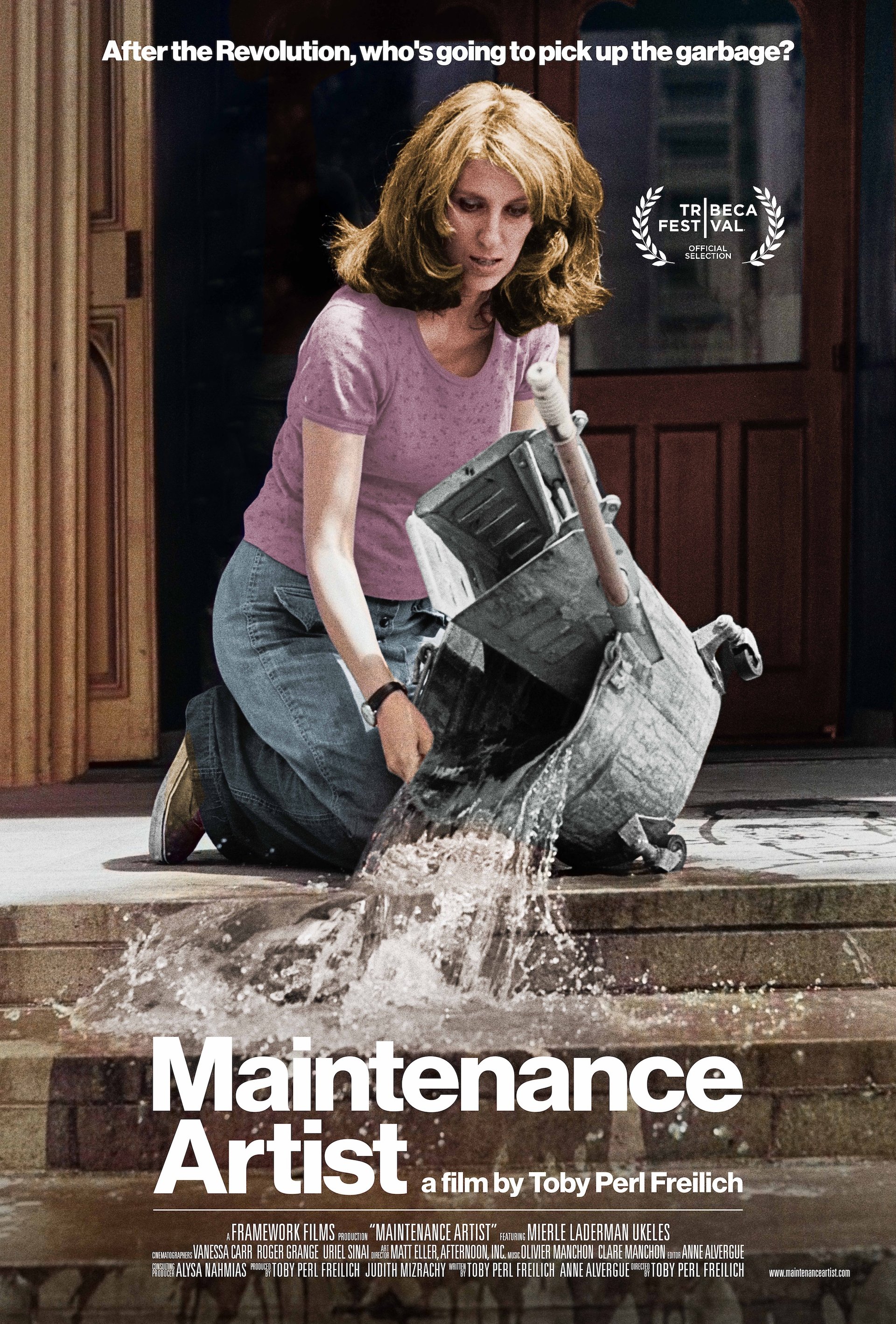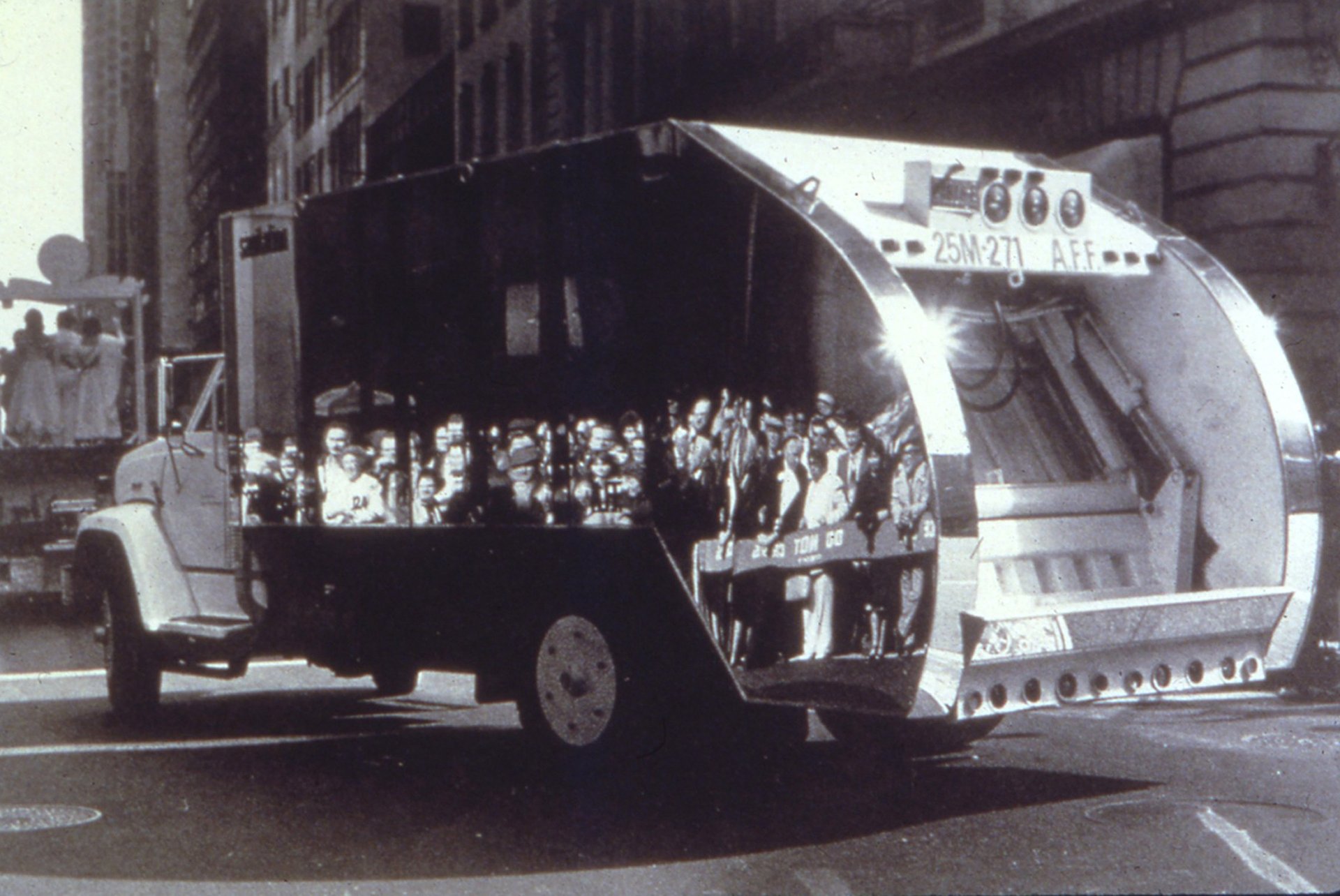Documentary chronicles decades of work by New York ‘maintenance artist’ Mierle Laderman Ukeles
“Good morning. My name is Mierle Laderman Ukeles and I’m a maintenance artist,” is how Maintenance Artist, a new feature-length documentary about the 86-year-old artist that will premiere at the Tribeca Film Festival on 8 June, begins. In this scene from 1979, Ukeles addresses a group of astounded truck operators in her capacity as the unpaid artist in residence of the New York City Department of Sanitation (a position she conjured, along with the term ‘maintenance artist’). “You hold up the whole city in your hands, with your unending work. I think it’s time for the public to hear what New York City feels like, from the side of the people that keep it alive every single day.”
What constitutes art and who is an artist? These timeless questions have produced countless answers, but no one has answered them quite like Ukeles. Looking for a way to remain a working avant-garde artist after becoming a mother, she reclaimed the act of maintenance as art. If her hero Marcel Duchamp could sign a urinal and make it art, then she could take the necessary tasks of diaper-changing, floor-washing and garbage-collecting and make them art, too.
Her works have ranged from a written Manifesto for Maintenance Art 1969! to an extended performance in which she shook hands with all 8,500 New York City sanitation workers during the fiscal crisis of the 1970s, and choreographed work ballets with dancers such as snow plow operators in Japan.
Mierle Laderman Ukeles, Touch Sanitation Performance, 1980 Photo: Marcia Bricker / © Mierle Laderman Ukeles. Courtesy the artist and Ronald Feldman Gallery, NY
Ukeles had her first major retrospective at the Queens Museum in 2016-17, a critically acclaimed show that marked a turning point in broader recognition of her work. The film-maker Toby Perl Freilich visited that exhibition on its final day, and knew Ukeles had a great story with “a lot of heart and also a lot of brain”, she says. Now, eight years later, Freilich’s documentary also helps maintain the legacy of this revolutionary maintenance artist.
“What viewers get to see is a full creative process,” Freilich tells The Art Newspaper. “We pulled back the curtain on her creative process and tied it to what was going on in her personal life, what was going on in society at large that she was responding to, that led her from her early work to her manifesto (which was groundbreaking) to her early work post-manifesto to a moment when she said: ‘I can’t keep making art only by myself, I want it to be collaborative.’”
Maintenance Artist takes viewers beyond the artist’s office—shown in the film at a moment when Ukeles was preparing to send her archives to the Smithsonian—and into her life. We hear about her father, an Orthodox rabbi, and learn that her own observation of the Sabbath means she does not attend exhibition openings on Friday nights. Her daughters speak about participating in works such as Dressing to Go Out/Undressing to Go In (1973), saying they did not always understand what they were doing, but “we were a family that all pitched in”.

Maintenance Artist official Tribeca Film Festival poster Courtesy Toby Perl Freilich
We also hear about Ukeles’s nearly 60-year marriage to her husband, Jack, down to who does the maintenance art of cooking dinner or washing dishes. (He cooks, she does the dishes.) We see Jack’s reflection in glass doors while photographing Ukeles’s maintenance art for posterity, and in other snapshots we see him in the background, carting off one of their young howling children while Ukeles was mid-performance.
Deciding which materials to include in Maintenance Artist was its own project. Ukeles has kept an extensive archive, much of it still stored at the Sanitation Department headquarters at 44 Beaver Street. “Mierle’s office—even though in the film it seems like it’s just a bunch of boxes—it was all meticulously organised and catalogued. The question was what to digitise,” says Freilich, who had footage digitised especially for the film.
Tough choices had to be made. Some things made it into Maintenance Artist based on Ukeles’s suggestions, and Freilich also wanted to include rarer materials—such as early home movies or the artist’s occasional appearances in television news stories. Freilich was also mindful that the artist’s video archive might start to disappear if these tapes were not digitised soon. In a way, Freilich’s film helped maintain the archive, too.

Mierle Laderman Ukeles, The Social Mirror, 1983. Created in collaboration with the New York City Department of Sanitation. © Mierle Laderman Ukeles. Courtesy the artist and Ronald Feldman Gallery, New York
Timed to coincide with the film’s premiere, Ukeles’s artwork The Social Mirror (1983), will be on view on East 12th Street near Second Avenue. It is a 20-cubic-yard refuse truck that she famously covered with mirrored glass, so that as it drove through the city viewers were confronted with themselves and their relationship with waste and maintenance. The truck is kept and maintained by the Department of Sanitation. Maintenance Artist will also be screened at the National Gallery of Art on 15 June as part of the DC/Dox film festival, and later in June it will be shown at the Bentonville Film Festival in Arkansas.
“If we want to live here, we must learn to cherish the work of taking care,” Ukeles says in one of the interviews recorded for the film. “That is in our hands. We are all a maintenance worker.”
- Maintenance Artist screens June 8, 9, 10 and 14 at the Tribeca Film Festival, New York




